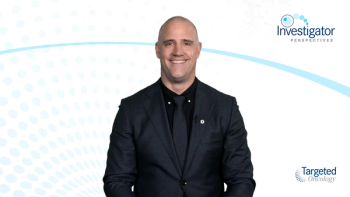
Lenvatinib: Dose Considerations
Marcia Brose, MD, discusses the efficacy and safety data of a phase 2 trial examining lenvatinib dose reductions in patients with RAI-DTC.
Episodes in this series

Marcia Brose, MD: The last analysis, I think is important to know, is there was a subsequent trial, a randomized, double-blinded trial, where patients were randomized between 18 and 24 mg of lenvatinib. Once again, this was to ask in an objective way, is starting patients at a lower dose as efficacious and possibly safer, than patients who start at 24 mg? This is in response to the fact a lot of people were starting at lower doses because they were concerned about all the adverse events, especially blood pressure and other things they were encountering in that first week or two. So 152 patients were randomized 1:1 to receive either 24- or 18-mg doses. They were then held and dosed reduced identically. No one knew what their patients got up front, but they adjusted as they would regardless of whatever the starting dose was, according to our standard way of grade 2s, intolerable grade 2s, or grade 3 adverse events. The primary end point was what was the safety profile, and what was the overall response rate at 24 weeks; most of the patients in the first trial had reached a response, a partial response or more at 24 weeks. The results of this trial were not what many of us expected, but interestingly at week 24, noninferiority was not demonstrated with 18 mg. In other words, response rates with 18 mg were significantly different than that with 24 mg and not as good. Noninferiority not being demonstrated basically means that giving 18 mg was not as good as 24 mg in this trial, when it was completely blinded in every other respect and including dose adjustment. What was surprising was the number of incidences of grade 3 or greater treatment emergent adverse events in the 24- and 18-mg arms were similar. They were not statistically significant; this is the reverse of what people were expecting. They expected it to be safer and just as good, and instead we found out that starting at a lower dose was not as good, and yet it was just as safe. I think what it goes to show us is that when using lenvatinib, if you are proactive and you do your dose adjustments, starting at 24 mg, even if they end up dose reducing, that first 2 weeks or 2 months that they might get at that higher dose, does seem to be clinically significant in this patient population.
Lori Wirth, MD: Marica, thank you. We are starting lenvatinib, the patient has disease progression, she is 71 years old. Andrew, what dose are you using?
Andrew Gianoukakis, MD: I am less forced into beginning a lower dose. I will turn to the 24-mg dose as the initial dose and dose adjust as needed from there.
This transcript has been edited for clarity.










































